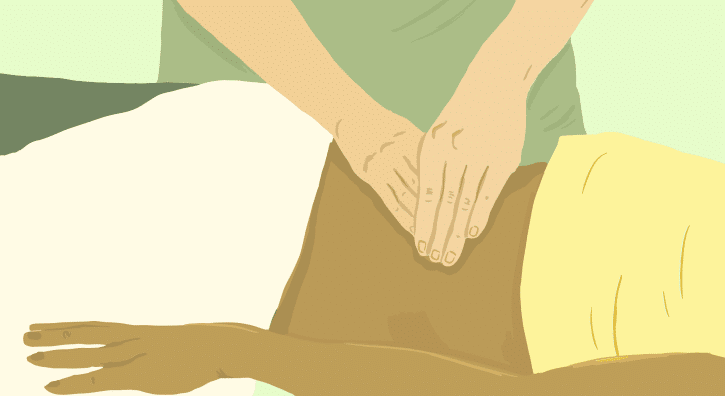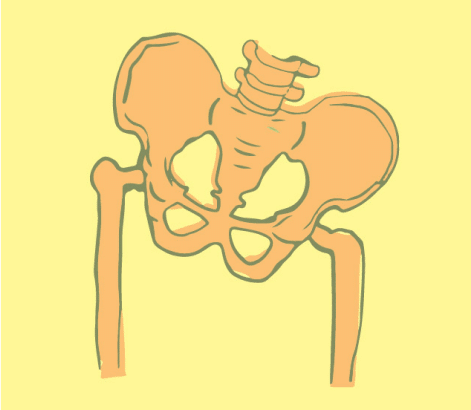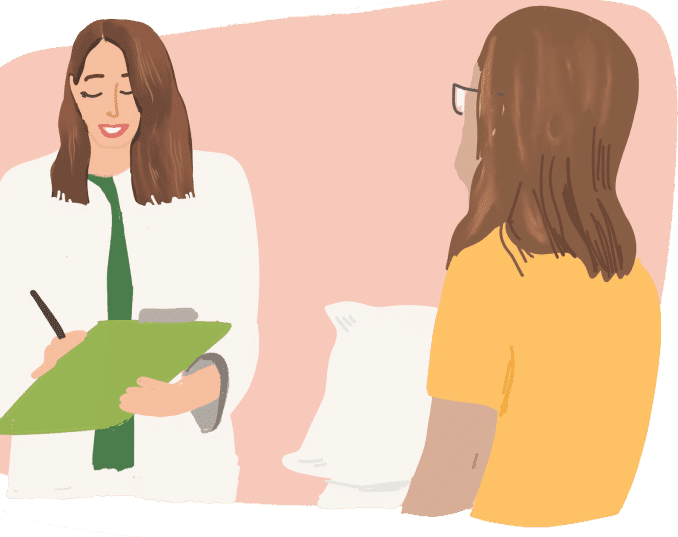

Difficulties related to sexual performance, desire, satisfaction, or pain during intimacy can significantly affect a person’s quality of life. Whether the issue involves arousal challenges, inability to climax, or discomfort during sex, it often leads to confusion and distress. What many don’t realize is that the pelvic floor muscles are central to sexual function. These muscles help sustain erections in men and enhance orgasmic pleasure for all through their rhythmic engagement during climax. Ideally, they contribute positively to the sexual experience, but when they become dysfunctional—too tight, too weak, or poorly coordinated—they can create problems like pain, reduced sensitivity, or emotional frustration. The good news is that targeted pelvic floor therapy offers a highly effective, evidence-based path toward recovery, helping individuals reclaim both physical function and a fulfilling sense of intimacy.
The Facts
- Studies show that sexual pain affects up to a third of women before menopause, though many suffer silently due to stigma or lack of awareness.
- Erectile dysfunction isn’t limited to older men; in fact, research suggests that 15% to 72% of men under 40 may experience this issue to some degree.
- For men in midlife and beyond, especially those aged 40 to 70, about 52% experience mild or moderate erectile difficulties, influencing emotional and relational well-being.
- Following prostate removal or related surgeries, up to 80% of male patients report noticeable problems with achieving or maintaining erections.
- Roughly 60% of menopausal women say they’ve avoided talking to their doctor about painful sex due to feelings of embarrassment, leading to prolonged discomfort.
- Certain medications, including oral contraceptives and some treatments for acne, are known to interfere with vaginal lubrication and contribute to vulvar pain.
- Even long after childbirth, nearly 65% of postpartum women continue to face pain during intercourse—sometimes lasting up to a year and a half.
Difficulties related to sexual performance, desire, satisfaction, or pain during intimacy can significantly affect a person’s quality of life. Whether the issue involves arousal challenges, inability to climax, or discomfort during sex, it often leads to confusion and distress. What many don’t realize is that the pelvic floor muscles are central to sexual function. These muscles help sustain erections in men and enhance orgasmic pleasure for all through their rhythmic engagement during climax. Ideally, they contribute positively to the sexual experience, but when they become dysfunctional—too tight, too weak, or poorly coordinated—they can create problems like pain, reduced sensitivity, or emotional frustration. The good news is that targeted pelvic floor therapy offers a highly effective, evidence-based path toward recovery, helping individuals reclaim both physical function and a fulfilling sense of intimacy.
The Facts
- Studies show that sexual pain affects up to a third of women before menopause, though many suffer silently due to stigma or lack of awareness.
- Erectile dysfunction isn’t limited to older men; in fact, research suggests that 15% to 72% of men under 40 may experience this issue to some degree.
- For men in midlife and beyond, especially those aged 40 to 70, about 52% experience mild or moderate erectile difficulties, influencing emotional and relational well-being.
- Following prostate removal or related surgeries, up to 80% of male patients report noticeable problems with achieving or maintaining erections.
- Roughly 60% of menopausal women say they’ve avoided talking to their doctor about painful sex due to feelings of embarrassment, leading to prolonged discomfort.
- Certain medications, including oral contraceptives and some treatments for acne, are known to interfere with vaginal lubrication and contribute to vulvar pain.
- Even long after childbirth, nearly 65% of postpartum women continue to face pain during intercourse—sometimes lasting up to a year and a half.
Symptoms
*Sexual Dysfunction in people with a penis
- Difficulty initiating or sustaining an erection may indicate underlying erectile dysfunction.
- Some men notice that their ejaculation lacks its usual intensity or volume, raising concerns.
- Urine release during climax—climacturia—is a common yet underreported symptom.
- Post-ejaculatory pain might manifest in the penis, testes, or perineal region.
- Unusual pigmentation or changes in skin color around the genitals could signal vascular or nerve-related issues.
Postpartum Sexual Dysfunction
- Breastfeeding hormones suppress estrogen, causing vaginal dryness and discomfort.
- Healing incisions or tears in the perineum may result in long-lasting pain during sex.
- Many new mothers experience a reduced ability to climax or feel less sensation during orgasm.
- Accidental urination during intimate moments may occur, sometimes unexpectedly.
- Chronic discomfort or pain during sex can continue well after postpartum healing is complete.
*Sexual Dysfunction in people with vulvas/vaginas
- Vaginal dryness during arousal can produce a sensation of rawness or irritation that interferes with intimacy.
- Entry pain, deep pelvic discomfort, or consistent pain throughout sex may all be signs of dysfunction.
- In some cases, even light contact with the clitoris causes pain rather than pleasure.
- Lingering burn or soreness after intercourse may point to inflammation or nerve sensitivity.
- Difficulty reaching orgasm or a loss of pleasurable climax can be linked to muscular or neurological issues.
- Leaking urine during intimacy is often tied to compromised pelvic support.
- Urination during orgasm is not uncommon and may suggest pelvic floor dysfunction.
Menopausal Sexual Dysfunction and Post-gynecologic cancer treatment
- Vaginal tissues lose elasticity and lubrication, making intimacy difficult or painful.
- Pain during penetration becomes a common complaint and may prevent intercourse altogether.
- After sex, soreness or aching may linger for hours due to tissue thinning and sensitivity.
- Orgasmic experiences may be duller or absent, influenced by both nerve and hormone changes.
Symptoms
*Sexual Dysfunction in people with a penis
- Difficulty initiating or sustaining an erection may indicate underlying erectile dysfunction.
- Some men notice that their ejaculation lacks its usual intensity or volume, raising concerns.
- Urine release during climax—climacturia—is a common yet underreported symptom.
- Post-ejaculatory pain might manifest in the penis, testes, or perineal region.
- Unusual pigmentation or changes in skin color around the genitals could signal vascular or nerve-related issues.
*Sexual Dysfunction in people with vulvas/vaginas
- Vaginal dryness during arousal can produce a sensation of rawness or irritation that interferes with intimacy.
- Entry pain, deep pelvic discomfort, or consistent pain throughout sex may all be signs of dysfunction.
- In some cases, even light contact with the clitoris causes pain rather than pleasure.
- Lingering burn or soreness after intercourse may point to inflammation or nerve sensitivity.
- Difficulty reaching orgasm or a loss of pleasurable climax can be linked to muscular or neurological issues.
- Leaking urine during intimacy is often tied to compromised pelvic support.
- Urination during orgasm is not uncommon and may suggest pelvic floor dysfunction.
Postpartum Sexual Dysfunction
- Breastfeeding hormones suppress estrogen, causing vaginal dryness and discomfort.
- Healing incisions or tears in the perineum may result in long-lasting pain during sex.
- Many new mothers experience a reduced ability to climax or feel less sensation during orgasm.
- Accidental urination during intimate moments may occur, sometimes unexpectedly.
- Chronic discomfort or pain during sex can continue well after postpartum healing is complete.
Menopausal Sexual Dysfunction and Post-gynecologic cancer treatment
- Vaginal tissues lose elasticity and lubrication, making intimacy difficult or painful.
- Pain during penetration becomes a common complaint and may prevent intercourse altogether.
- After sex, soreness or aching may linger for hours due to tissue thinning and sensitivity.
- Orgasmic experiences may be duller or absent, influenced by both nerve and hormone changes.
Associated Diagnoses
Diagnoses such as Endometriosis, Vulvodynia, Interstitial Cystitis/Painful Bladder Syndrome, Pudendal Neuralgia, Chronic Pelvic Pain Syndrome/Male Pelvic Pain, Lichen Sclerosus, Lichen Planus, Pelvic Floor Dysfunction, post-prostatectomy complications, and Genitourinary Syndrome of Menopause are all associated with sexual dysfunction and pelvic pain.

Associated Diagnoses
Diagnoses such as Endometriosis, Vulvodynia, Interstitial Cystitis/Painful Bladder Syndrome, Pudendal Neuralgia, Chronic Pelvic Pain Syndrome/Male Pelvic Pain, Lichen Sclerosus, Lichen Planus, Pelvic Floor Dysfunction, post-prostatectomy complications, and Genitourinary Syndrome of Menopause are all associated with sexual dysfunction and pelvic pain.


Causes of Sexual Dysfunction
- Pelvic pain syndromes associated with pelvic floor dysfunction (above)
- Childbirth
- Medications
- Obesity
- Cardiovascular disease
- Menopause
- Jelqing
- Genital mutilation, genital cutting
- Surgically-induced
- Pelvic Floor Reconstruction
- Prostatectomy
- Gender affirming surgery
- Episiotomy
- Vestibulectomy
- Pudendal Nerve Decompression
- Mesh excision
Causes of Sexual Dysfunction
- Pelvic pain syndromes associated with pelvic floor dysfunction (above)
- Childbirth
- Medications
- Obesity
- Cardiovascular disease
- Menopause
- Jelqing
- Genital mutilation, genital cutting
- Surgically-induced
- Pelvic Floor Reconstruction
- Prostatectomy
- Gender affirming surgery
- Episiotomy
- Vestibulectomy
- Pudendal Nerve Decompression
- Mesh excision

Diagnostic Challenges
In clinical practice, sexual health still remains a challenging and under-discussed topic. Too often, providers aren’t adequately trained to address sexual wellness with confidence and sensitivity, leaving patients unsure of how—or whether—to bring up their concerns. This communication gap can have a significant impact, particularly for LGBTQ+ patients who may already feel unwelcome or misunderstood in mainstream medical settings. At PHRC, we acknowledge the real and urgent need to change this dynamic. Our team is devoted to creating a safe, inclusive space where individuals can openly share their experiences and seek help without fear of stigma. We understand that sexual health encompasses physical, emotional, and psychological factors, which is why our care model integrates pelvic floor therapy with collaborative medical and mental health approaches. By treating the whole person and respecting the unique identities and needs of every patient, we aim to bridge the gap in care and foster long-term healing and self-empowerment.
Diagnostic Challenges
In clinical practice, sexual health still remains a challenging and under-discussed topic. Too often, providers aren’t adequately trained to address sexual wellness with confidence and sensitivity, leaving patients unsure of how—or whether—to bring up their concerns. This communication gap can have a significant impact, particularly for LGBTQ+ patients who may already feel unwelcome or misunderstood in mainstream medical settings. At PHRC, we acknowledge the real and urgent need to change this dynamic. Our team is devoted to creating a safe, inclusive space where individuals can openly share their experiences and seek help without fear of stigma. We understand that sexual health encompasses physical, emotional, and psychological factors, which is why our care model integrates pelvic floor therapy with collaborative medical and mental health approaches. By treating the whole person and respecting the unique identities and needs of every patient, we aim to bridge the gap in care and foster long-term healing and self-empowerment.
Treatment:
How We Can Help You

Sexual dysfunction can impact more than just physical well-being—it can affect your emotional health, relationships, and daily life. For people in Carlsbad, pelvic floor physical and occupational therapy may be the missing link in resolving these issues. The process begins with a one-on-one assessment, where your therapist will review your health history, discuss any previous treatments, and explore your current symptoms in detail. Many individuals in the Carlsbad community have turned to us after feeling dismissed elsewhere, and we take every concern seriously. Your physical evaluation will focus on muscular strength and coordination, tissue sensitivity, nerve involvement, and joint mobility. Afterward, your therapist will share the results with you and develop a care plan tailored to your needs—typically involving 1–2 visits per week over a 12-week period, plus a personalized home routine. If necessary, we work closely with your broader care team to ensure a unified approach. At our clinic, we’re committed to helping Carlsbad patients restore their health and regain the comfort and self-assurance they deserve.

Treatment:
How We Can Help You
Sexual dysfunction can impact more than just physical well-being—it can affect your emotional health, relationships, and daily life. For people in Carlsbad, pelvic floor physical and occupational therapy may be the missing link in resolving these issues. The process begins with a one-on-one assessment, where your therapist will review your health history, discuss any previous treatments, and explore your current symptoms in detail. Many individuals in the Carlsbad community have turned to us after feeling dismissed elsewhere, and we take every concern seriously. Your physical evaluation will focus on muscular strength and coordination, tissue sensitivity, nerve involvement, and joint mobility. Afterward, your therapist will share the results with you and develop a care plan tailored to your needs—typically involving 1–2 visits per week over a 12-week period, plus a personalized home routine. If necessary, we work closely with your broader care team to ensure a unified approach. At our clinic, we’re committed to helping Carlsbad patients restore their health and regain the comfort and self-assurance they deserve.
How Can We Help You?
Please use the form below to send us any questions or comments. You must include your e-mail address in order for us to send a response. Please be assured that all of your information will be kept confidential.

Join The Newsletter. Win a copy of our book, “Pelvic Pain Explained!”
We love getting to know our website visitors. Please tell us a little bit about yourself and get the latest info via PHRC e-newsletter!
*Subscribers automatically eligible to win our book, “Pelvic Pain Explained.”
This book provides a compelling exploration of pelvic pain and the many ways it affects those who live with it. Pelvic Pain Explained outlines the ongoing challenges patients face, including being misheard or misdiagnosed, and the emotional weight of finding the right care. It also highlights the clinicians’ side—the difficulty of treating a condition with no easy answers. The psychological impact of this journey is a major theme, especially how chronic pain can reshape identity, relationships, and one’s ability to feel in control of their own life.


